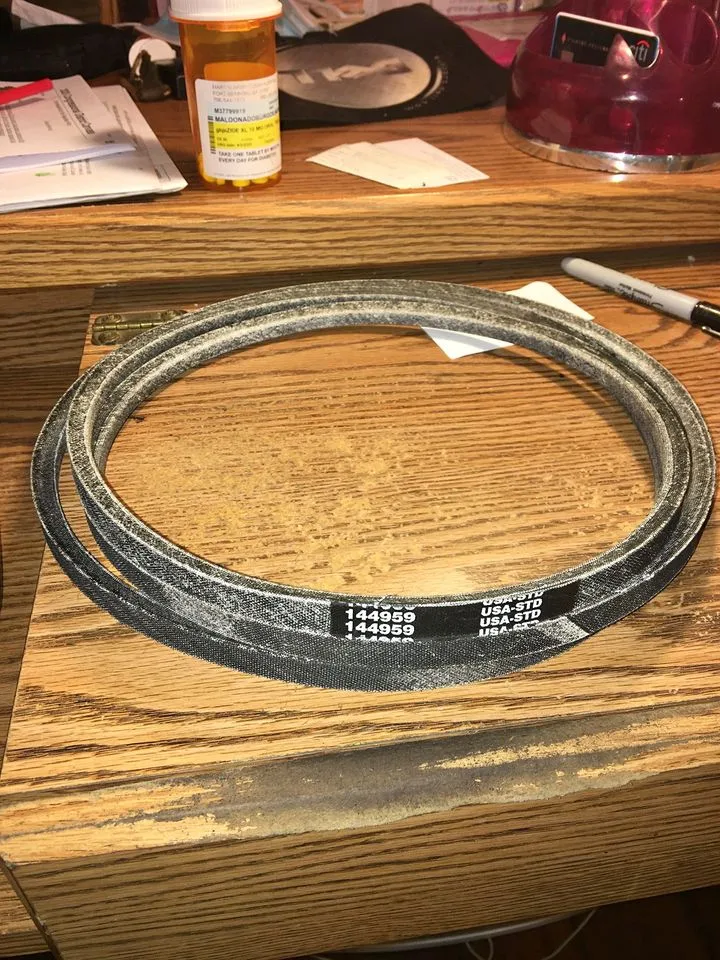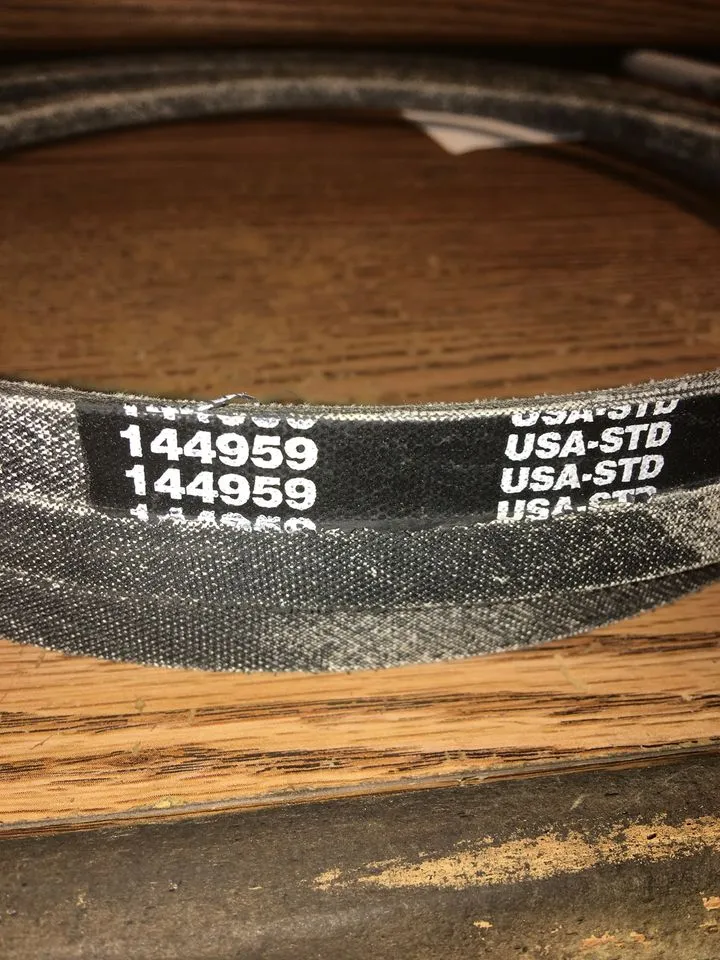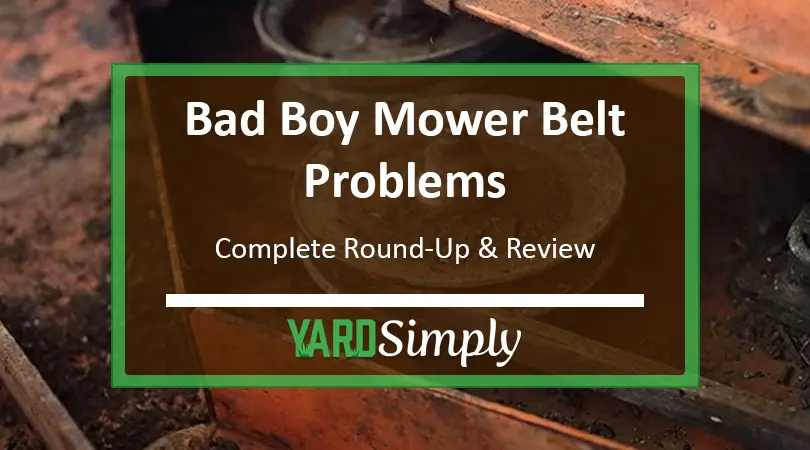As an experienced mechanical engineer specializing in agricultural machinery, I bring a wealth of knowledge to the table.
My extensive background in maintenance and troubleshooting lawn mower systems allows me to provide insightful and practical solutions to common issues encountered with Bad Boy mower belts.
Trust in my expertise as we delve into the nuances of Bad Boy mower belt problems, and discover how to keep your mower in top condition.
Quick Summary
- Bad Boy mower belt problems, including issues with looseness, wear, shredding, slipping, as well as spindle and pulley bearing issues.
- Regular maintenance, including proper belt tensioning and using OEM belts for replacements, is vital for the smooth operation of Bad Boy mowers.
- It’s recommended to inspect Bad Boy Mower belts every 50 hours of operation or at least once a season for optimal performance.
- Proactively addressing Bad Boy mower belt issues, like wear and tension, is essential to avoid performance degradation and extend the equipment’s lifespan.
Identifying Bad Boy Mower Belt Problems

Recognizing common Bad Boy mower belt problems is necessary. By understanding these issues, you’ll be better equipped to diagnose and resolve them, ensuring your mower remains in top-notch condition.
Related Posts:
Loose, Worn, or Improperly Tensed Belts
Identification:
- For loose or worn belts, inspect for signs of wear such as cracking, stretching, or a glazed appearance.
- For improper belt tension, use a belt tension gauge to measure the tension.
What to Look For:
- Check for looseness, signs of wear, or a belt that is either too tight or too loose.
- Tension outside the recommended 70-75 lbs of pressure per square inch range indicates improper tension.
Solution:
- Replace worn or damaged belts with new ones, ensuring they are of the correct type and size.
- Adjust the belt tension according to the owner’s manual guidelines, ensuring it is neither too tight nor too loose for optimal performance.
Shredded Belts
Identification:
- For shredded belts, look for signs of shredding on the belt.
- For damaged belts, inspect regularly for any signs of excessive wear or damage.
What to Look For:
- Shredded belts may be due to improper installation, contact with brackets, or wear from pulleys. Look for shiny wear spots indicating strain.
- Damaged belts can be identified by visual wear, cracks, or deformities. Ensure replacements are OEM (Original Equipment Manufacturer) for proper fit.
Solution:
- For shredded belts, follow the manufacturer’s instructions for correct belt installation and replace the belt if necessary.
- For damaged belts, replace with OEM parts. If unsure about the replacement process, seek professional help or visit a Bad Boy dealership.
Belts Slipping Off Pulleys
Identification:
- Observe if the belt slips off during operation.
What to Look For:
- Debris, rust, or oil on the belt or pulley.
Solution:
- Clean pulleys regularly using a wire brush or compressed air and remove lodged debris.
Spindle and Pulley Bearing Issues (Including Bad Spindle Bearings and Damaged Pulley Bearings)
Identification:
- General bearing issues: Look for wobbling, vibration, or the belt dislodging from the pulley.
- Bad spindle bearings: Inspect the spindle housing for movement or knocking sounds.
- Damaged pulley bearings: Manually spin the pulleys to detect resistance or noise.
What to Look For:
- For general bearing issues: Check for signs of faulty spindle and pulley bearings.
- For spindle bearings: Excessive play in the blade attachment or wobbling at higher speeds.
- For pulley bearings: Wear or damage signs in the bearings.
Solution:
- For general bearing issues: Replace bearings or the entire cutter housing assembly as required.
- For bad spindle bearings: Replace the spindle bearings or the entire cutter housing assembly, depending on the model.
- For damaged pulley bearings: Properly secure pulleys and replace bearings as necessary.
Preventive Maintenance for Bad Boy Mower Belts
Preventive maintenance is key to prolonging the life of your Bad Boy mower and ensuring it operates smoothly.
Adhering to these practices will help maintain your mower in prime condition and reduce the risk of belt issues.
Related: Bad Boy Mowers Problems
Regular Inspections

Inspect belts, pulleys, and bearings regularly for signs of wear, damage, or debris. Replace or clean as needed to maintain optimal performance.
It’s recommended to inspect Bad Boy Mower belts for optimal performance every 50 hours of operation or at least once a season.
Equipped with the right tools and knowledge, early identification and prompt addressing of potential issues can help prevent costly repairs and downtime.
Proper Storage
Store your zero turn mower properly to prevent moisture damage to belts, which can cause premature wear and reduce the lifespan of the mower.
Avoid operating the mower on side hills, using ethanol-containing fuel, and storing the mower in changing temperature conditions.
Using a storage cover and other accessories available from Bad Boy Mowers can also help protect your investment and keep your Bad Boy deck and lawn mower in top condition, while also considering Bad Boy tractors for your larger landscaping needs.
Lubrication and Cleaning
Follow the manufacturer’s instructions to lubricate belts with dressing or silicone spray. Clean the mower deck regularly to prevent rust, oil, and debris buildup, which can lead to belt issues.
Keeping your lawn mower clean and well-lubricated not only ensures optimal performance but also extends the life of your investment.
Our Verdict on Bad Boy Mower Belt Problems
In my experience, addressing Bad Boy mower belt issues is a manageable task that’s crucial for a pristine lawn. Through personal trials, I’ve learned the importance of regular inspections and timely interventions.
Whether it’s adjusting tension, replacing worn parts, or ensuring proper storage and maintenance, these steps have been vital. By sharing my insights, I hope to empower others to handle these challenges with confidence.
Remember, a little effort and the right know-how can make a significant difference in your mower’s longevity and performance.
Frequently Asked Questions
Why does my lawn mower drive belt keep breaking?
The drive belt on your lawn mower may be breaking due to excessive wear and tear, improper tensioning, misalignment of pulleys or components, running the mower over debris or uneven terrain, using the wrong size or type of belt, damaged or bent pulleys, or build-up of dirt, grass clippings, and debris.
How often do you need to replace a belt on a zero turn mower?
Mower belts need to be inspected regularly, approximately every 40-50 hours of use, and replaced when signs of wear are noticed. Increased mower use will require more frequent belt replacement.
How do I know if my mower needs a new belt?
If you notice the mower belt has a damaged or glazed sidewall, a reinforced sidewall, or is cracked, these signs indicate that your belt needs to be replaced as soon as possible. Burning or glazing on the sidewall of the belt also indicates it has been worn down and needs replacing.
What are the common belt problems in Bad Boy mowers?
Common belt problems in Bad Boy mowers include loose or worn belts, shredded belts, and belts slipping off pulleys.
How do I know if my mower’s spindle bearings are bad?
To diagnose bad spindle bearings, listen for any knocking or movement noises coming from the spindle housing.


